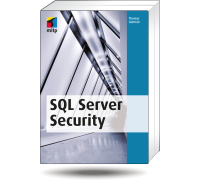Bei SimpleTalk.com beschreibt Mario Broodbakker in dem Artikel "SQL Server Wait Events: Taking the Guesswork out of Performance Profiling" wie man am SQL-Server anhand der Warteschlangen Performancebremsen ausmachen kann. Der Artikel ist gut zu lesen. Allerdings stößt mir etwas säuerlich auf, dass nicht deutlich genug rauskommt, dass diese Idee Tom Davidson schon vor Jahren beschrieben und eingesetzt hat.
Ich finde den originalen Artikel "SQL Server 2005 Waits and Queues" von Davidson immer noch etwas besser. Am besten ist es vermutlich beide zu lesen, weil es doch eine Menge Holz auf einmal ist. Das Dokument "Troubleshooting Performance Problems in SQL Server 2005" wird hingegen erwähnt. Auch dort stehen wirklich nützliche Dinge drin, aber der in diesem Fall relevante Teil könnte gerne länger sein. Den Artikel würde ich für später empfehlen.
Wenn man den Post von Broodbakker und den Original-Artikel gelesen hat, dann findet man die weiteren Tipps von Tom Davidson zu dem Thema sicher auch nützlich: sie stehen im Artikel "Performance and Tuning Blue Prints".





Thomas,
Unfortunately my German is not good enough to write this in German, so appologies for this.
Thanks, for the compliment, and I think you are right about your comment on Tom Davidson. He and Gert Drapers are writing and presenting on this subject for years and I only mention them in a foot note: they deserve better. I try to correct this is a next article. I do mention it on my homepage though. I found about their stuff when I was working on my SS2000 wait event tools. It still beats me why this subject isn't bigger in the SQL Server world. But maybe it is, and I just don't see it as an Oracle guy..Another thing I don't understand is why MS just doesn't develop this further and implements those per session/task/batch or whatever level wait events, and traces those things!
What I try to tell in the Simple-talk article is that waits (together with CPU time) ar so much more important than just things you look at when experiencing locking problems. They should be the base of performance profiling and capacity planning in my view.
But you are right 'SQL Server 2005 Waits and Queues' *is* a better paper 🙂
thanks!
Dear Mario,
Thanks for your comment. If you were able to read my posting, I presume your german has to be pretty good. It seems to me you even understood some difficult german phrases.
Please do not get me wrong: I really recommend to read your article. It is very good: very accurat and useful. And it is easier to read than Toms papers.
Of course you are right. When Tom explained this in 2002 to me, it was totally new for me, but already old for him. I was totally struck by the simple idea and how useful that is. I allways wondered why this stuff was so purely "advertised". I presume it is to difficult to understand and you need some SQL-Server knowledge to use it.
I am looking forward to your next articles about SQL stuff…
Bye,
Thomas